GENERAL DATA
Plant parts: Leaf
Cultivation mode: Wild collection/Cultivated
In manufacturing: Essential oil, pharmaceutical, spice, perfumery, soap, shampoo, extract.
In food: Tea, soup, salad, meat.
🌿 Industries That Use Marjoram Dried Leaves (Origanum majorana L.)
Marjoram, also known as sweet marjoram, is a Mediterranean herb from the mint family (Lamiaceae). The dried leaves are highly aromatic, rich in essential oils (notably terpinen-4-ol, sabinene hydrate, and linalool), and prized for their culinary, therapeutic, and functional fragrance applications.
1. Food & Culinary Industry
Marjoram is a classic culinary herb used for its warm, sweet, and slightly floral aroma.
Culinary Applications:
-
Seasoning for soups, meat dishes, legumes, and vegetables
-
Widely used in Mediterranean, Middle Eastern, and Central European cuisines
-
Essential in sausage blends, tomato-based sauces, stuffing, and herb mixes
-
Used in bouquet garni, herbes de Provence, and poultry rubs
✅ Available as whole dried leaves or crushed
✅ Used in spice blends, culinary oils, and instant meal kits
2. Pharmaceutical & Herbal Medicine Industry
Marjoram has long been used in folk and traditional medicine as a digestive, antispasmodic, and anti-inflammatory herb.
Medicinal Uses:
-
Digestive support: relieves bloating, indigestion, and cramping
-
Nervine tonic: used for anxiety, insomnia, and mild stress
-
Respiratory remedy: helps with coughs, colds, and sinus issues
-
Anti-inflammatory: sometimes used for arthritis and muscle pain
✅ Delivered as infusions, capsules, powders, and essential oils
✅ Commonly paired with Fennel, Chamomile, and Thyme
3. Nutraceutical & Functional Food Industry
Marjoram leaves are used in detox teas, digestive blends, and functional wellness products.
Examples:
-
Caffeine-free herbal teas for gut and relaxation
-
Included in women’s health formulas and anti-inflammatory blends
-
Sometimes found in enzyme-stimulating or liver support mixes
✅ Found in capsules, loose-leaf teas, extract powders
4. Cosmetic & Personal Care Industry
The soothing and antimicrobial properties of marjoram make it useful in natural personal care products.
Cosmetic Applications:
-
Used in herbal bath blends, cleansing tonics, and muscle relief oils
-
Included in natural deodorants and aromatherapy roll-ons
-
Sometimes used in herbal facial steams for congested or oily skin
✅ Known for its calming scent and mild antibacterial action
5. Essential Oil & Aromatherapy Industry
Marjoram essential oil (steam-distilled from dried leaves or flowering tops) is a relaxant, muscle soother, and respiratory aid.
Aromatherapeutic Uses:
-
Used in massage oils for cramps, joint pain, and tension
-
Included in stress-relief diffuser blends
-
Known to promote deep sleep and emotional balance
✅ Often blended with Lavender, Eucalyptus, and Bergamot oils
6. Veterinary & Ethnoveterinary Use
Traditionally used for digestive and respiratory support in livestock and poultry.
Applications:
-
Infused into herbal tonics or added to feed
-
Supports appetite, gut health, and immune resilience
-
Used in ethnoveterinary traditions in Iran, India, and North Africa
✅ Summary of Key Applications
| Industry | Common Uses |
|---|---|
| Food & Culinary | Seasoning, dry herb blends, spice mixes |
| Pharmaceutical/Herbal | Digestive aid, antispasmodic, stress relief |
| Nutraceutical | Detox teas, women’s wellness, functional powders |
| Cosmetic/Personal Care | Herbal soaks, deodorants, skincare tonics |
| Essential Oil & Aroma | Stress oils, muscle relief blends, sleep aids |
| Veterinary Use | Herbal gut and respiratory support for livestock |
🌟 Key Features
-
Rich in terpinen-4-ol, sabinene hydrate, linalool
-
Known for sweet, warm, slightly camphoraceous aroma
-
Gentle herb used for digestion, stress, and inflammation
-
Popular in both culinary and therapeutic markets
-
Available as cut leaves, powders, and essential oil
🌿 Industries That Use Sweet Marjoram Seeds (Origanum majorana L.)
Sweet marjoram seeds are the reproductive units of the Origanum majorana plant, primarily used in commercial herb farming, seed trade, and ecological cultivation. While not directly used in food or medicine, they are essential for growing the aromatic leaves and flowering tops that fuel culinary, nutraceutical, and aroma industries worldwide.
1. Agricultural & Herb Cultivation Industry
Sweet marjoram seeds are widely used to propagate the plant in open-field and controlled farming systems.
Applications:
-
Commercial cultivation for dried leaves and essential oil production
-
Grown in both organic and conventional systems
-
Suitable for small-scale farms, herb gardens, and industrial plots
✅ Important for crop rotation, pollinator support, and soil enrichment
2. Seed Trade & Botanical Supply Industry
Marjoram seeds are actively traded in global herb seed markets.
Applications:
-
Sold as certified organic, heirloom, or hybrid seed varieties
-
Distributed by agro-suppliers, online seed stores, and herbal cooperatives
-
Packaged for both bulk farming and home gardening
✅ Popular in Europe, the Middle East, and North America
3. Horticultural & Greenhouse Production
Seeds are used in high-efficiency greenhouse and hydroponic production systems.
Applications:
-
Grown in urban farms, terrace gardens, and vertical systems
-
Essential for year-round herb production
-
Found in culinary herb kits for restaurants and gourmet supply chains
✅ Supports consistent harvests for fresh marjoram markets
4. Botanical Research & Breeding Programs
Used in research programs focusing on cultivation and essential oil yield.
Applications:
-
Selection of high-performance marjoram cultivars
-
Trials for germination rates, climate adaptability, and pest resistance
-
Research into chemotype development and genetic conservation
✅ Frequently studied in EU agronomic institutes and academic farms
5. Ecological Gardening & Permaculture
Sweet marjoram is valued in sustainable and biodiverse farming systems.
Applications:
-
Attracts pollinators and supports biodiversity
-
Functions as a companion plant for vegetables
-
Used in regenerative agriculture and natural pest control
✅ Included in permaculture seed blends and garden biodiversity kits
✅ Summary of Key Applications
| Industry | Common Uses of Marjoram Seeds |
|---|---|
| Agriculture & Herb Farming | Propagation of crops for dried herb and essential oil production |
| Seed Trade | Organic and heirloom seed sales, seed libraries |
| Horticulture | Urban growing, hydroponics, controlled cultivation |
| Botanical Research | Germination studies, cultivar development, plant genetics |
| Ecological & Permaculture | Pollinator gardens, companion planting, biodiversity projects |
🌟 Key Features
-
Not used for culinary or direct medicinal purposes
-
Tiny, reliable seeds ideal for propagation and greenhouse cultivation
-
Available in bulk, retail packets, and pelletized formats
-
Essential for sustaining the supply of dried leaves and essential oil
-
Supports sustainable farming, seed conservation, and ecological planting
🌿 Comparison: Sweet Marjoram Seeds vs Leaves
(Origanum majorana L.)
| Aspect | Marjoram Seeds | Marjoram Dried Leaves |
|---|---|---|
| Botanical Part | Tiny, dark reproductive seeds | Aerial leafy part of the plant |
| Primary Purpose | Propagation and cultivation | Culinary, medicinal, and aromatic use |
| Direct Consumption | ❌ Not consumed | ✅ Widely consumed in food and tea |
| Industries Involved | Agriculture, seed trade, research | Food, pharma, cosmetic, nutraceutical, aroma |
| Culinary Use | ❌ Not applicable | ✅ Used as a seasoning herb (soups, meats, sauces) |
| Medicinal Value | ❌ No medicinal activity | ✅ Antispasmodic, carminative, mild sedative |
| Cosmetic Use | ❌ None | ✅ Included in herbal skincare, bath soaks, and oils |
| Aromatic Properties | ❌ No aroma | ✅ Warm, sweet, mildly floral aroma |
| Essential Oil Source | ❌ Not a source | ✅ Primary source for Origanum majorana essential oil |
| Trade Format | Raw, untreated, pelletized seeds | Dried whole leaves or crushed powder |
| Market Form | Bulk seed packets, retail seed sachets | Culinary herb jars, herbal tea, essential oil |
| Shelf Life | Long (1–3 years if stored well) | Moderate (1–2 years dried) |
| Role in Product Lifecycle | Starting point (crop cultivation) | Final product (used directly) |
| End User | Farmers, researchers, gardeners | Consumers, herbalists, chefs, manufacturers |
✅ Summary Comparison
| Category | Seeds | Leaves |
|---|---|---|
| Function | Input for farming | Ingredient for food, wellness, and cosmetics |
| Use Type | Agricultural and propagation only | Directly usable in products |
| Market Reach | Niche (growers, seed traders) | Broad (culinary, pharma, wellness, export) |
| Phytochemical Relevance | None directly | High in essential oils, antioxidants |
🌟 Final Notes
-
Seeds are vital to the supply chain and long-term cultivation of marjoram but hold no direct end-use value for consumers.
-
Leaves are the functional part used across diverse industries for their taste, aroma, and therapeutic benefits.
Both are essential, but in different phases of the herb’s lifecycle—from field to formulation.
PRODUCT NAME IN DIFFERENT LANGUAGES
Persian Name: مرزنجوش/ Marzanjoosh
German Name (Deutschland, Austria, Switzerland): Majoran
French Name (France, Belgium, Switzerland, Quebec): Marjolaine
HARVEST CALENDAR
Feb
Mar
Apr
May
Jun
Jul
Aug
Sep
Oct
Nov
Dec
About Origanum Majorana
Origanum majorana is a perennial plant that reaches five centimeters in height and has many stems and leaves. The stems of this hairy plant are relatively thin and their cross section is often circular and sometimes square. Older Origanum majorana stems are reddish in color.
The leaves of the Origanum majorana plant are slightly hairy, sometimes triangular, elongated, and pointed, and sometimes oval, and grow oppositely on the four sides of the stem. The taste of Origanum majorana leaves and flowering branches is slightly sweet at first. But after a few moments it becomes a little bitter. Origanum majorana leaves and flowering branches are fragrant.
Origanum majorana plant flowers are very small, slightly elongated and white in color. These flowers grow from a set of very small and concentrated leaflets at the end of the flowering stems. Each flower usually has five triangular, pointed and slightly elongated edges.
Marjoram Temperament
Hot and dry.
3. Boil it and incense with its decoction, then drink its boiled water. It cures headaches caused by black bile and phlegm, and it will be more effective if you knead some of it with Henna and poultice on the head.
4. Pound 100 grams of it gently and pour in half a liter of Olive oil and boil it in “Bain Marie” for two hours. After cooling, pour it in a bottle and keep it in a cool place and poultice it on the joints every day. Treats joint pain.
5. Its decoction is useful for washing and disinfecting wounds.
6. Boil it and drink its decoction and sniff it in the nose. Improves Parkinson and epilepsy.
7. Smelling it strengthens the mental powers and incense it clears the nose.
8. Poultice cooked Marjoram. Removes Leishmaniasis and scars left on the skin.
9. Inhaling its decoction with salt opens the nose and eliminates sinus infections.
10. Rubbing its essential oil is useful for treating paralysis and cold neurological diseases such as tetanus, and rubbing it into the eyes is useful for eliminating weakness of the eye.
11. Rubbing its fresh leaves is used for dislocations and fractures of the limbs, numbness of the limbs and toothache.
12. Its suppository in vagina is emmenagogue.
13. Pouring a few drops of its essential oil inside the ear or putting cotton wool on the essential oil in the ear opens and removes ear whistling.
14. Its decoction is useful for washing and disinfecting wounds.
15. Chewing it with salt is useful to prevent salivation secrete.
Marjoram Side Effects
Excessive consumption is harmful to the kidneys and bladder.
Marjoram Modifier
Chicory (Cichorium intybus) extract and Purslane (Portulaca oleracea) seeds.
To order Origanum majorana seeds, please contact us.


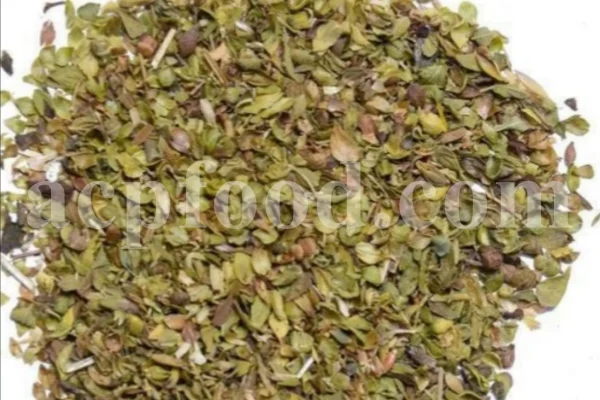


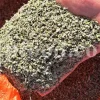
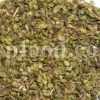
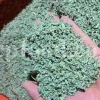

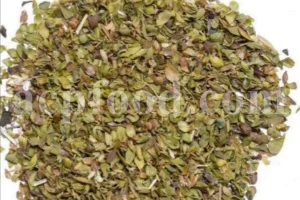

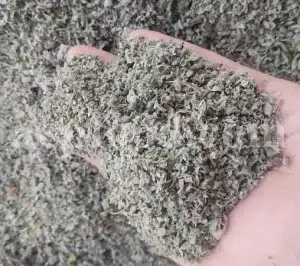
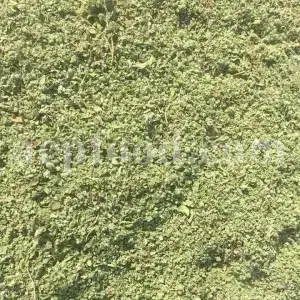
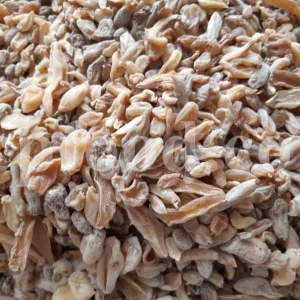
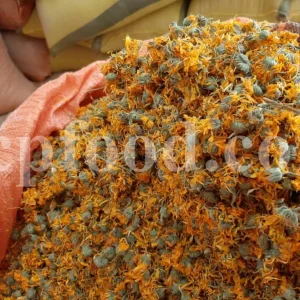
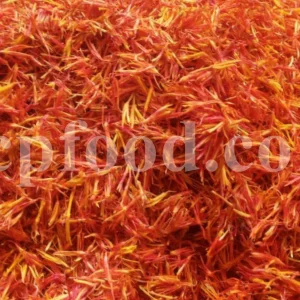
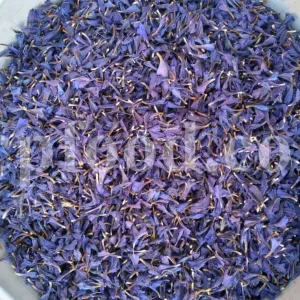
Reviews
There are no reviews yet.